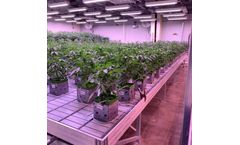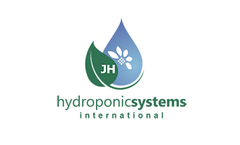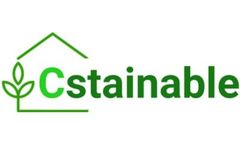Lettuce Growing Articles & Analysis
15 articles found
Introduction: The Crucial Role of pH Level in Hydroponics In hydroponic systems, where plants grow without soil, the pH level of the nutrient solution plays a pivotal role in nutrient availability and absorption. ...
How do you achieve the highest yields with your lighting system? As we know, increasing light intensity up to a certain species-specific point, results in a corresponding increase in yield. And when light levels are not optimized for production, or the type of crop you are growing, you are going to have slower flowering, poor root development and plant structure, as well as reduced yields. There ...
Whether you’re a grower wanting to extend your season in the hoop house or greenhouse, an urban rooftop farm, or a small indoor start-up—horticultural lighting gives you the flexibility and assurance that you will be growing the highest quality products year-round. With demand for local grown produce increasing, it’s not surprising to see many small growers expand into ...
The Future has Begun The company B-Four Agro grows lettuce using the hydroponic method. The heads of lettuce, which grow in covered deep water cultures, find the ideal conditions here for quick and healthy growth. The efficient use of space, combined with a low consumption of resources, protects not only the environment but also ...
Last October, a Japanese variant of lettuce was germinated in the hydroponic system of the ISS and after 28 days of growing, the plant was ready for the study of its nutritional value. Previously and that same month, China managed to grow a cotton plant in a hydroponic minibiosphere located in the surface of the Moon. Growing ...
Lettuce Growth Trials were carried out at the Controlled Environment Systems Research Facility at the University of Guelph as a part of a larger trial utilizing CO2 GRO Inc.’s licensed gas infusion technology for the growth of all plants using CO2. This report deals only with the lettuce growth trial aspects. Two lettuce crops produced during the trial produced 33% and 100% increases in ...
Using LED grow lights in plant production is a relatively new branch of science. ...
Härkälä nursery is locally a strong brand. In addition to company image of “locally grown”, the very high quality of Härkälä products keeps the customers happy. “We have long term focus in developing our production. We have been the first to introduce new technologies in climate control and other areas of cultivation. We operate the logistics ...
In this instance the remains of the lettuce crops needed cutting and what better way to do this than with a flail mower! The hammer blades on the mower sliced the tops of the lettuce with ease and left the cuttings finely mulched ready for the ground to be cultivated for the next crop. ...
Climate changes and continuous population growth increase water demands that will not be met by traditional water resources, like surface and ground water. To handle increased water demand, treated municipal wastewater is offered to farmers for agricultural irrigation. This study aimed to enhance the effluent quality from worn-out sewage treatment facilities in rural villages, retreat effluent ...
The first trials commenced in July on lettuce seedlings which had been transplanted to the growing benches a week previously and the trials were subsequently extended to include tomatoes, capsicums and cucumbers. ...
These lettuce seedlings were transplanted to the growing benches on 15 July and treatment commenced on 23 July. ...
Cover crops are widely used in both conventional and organic systems to protect and improve the soil. This study evaluated the effect of summer cover crop and management system on the production of fall romaine lettuce (Lactuca sativa L.) and spring cantaloupe (Cucumis melo L.) from 1999 to 2003. Cover crop treatments included cowpea [Vigna unguiculata (L.) Walp.] incorporated (CPI), cowpea used ...
ABSTRACTThe aim of this study was to evaluate the potential cultivation of lettuce (Lactuca sativa) with domestic wastewater effluents with different levels of treatment from a compact WWTP in Brazil. Vegetables were grown in five treatments: nutrient solution (control), secondary effluent diluted 50%, secondary effluent not diluted, tertiary effluent UV irradiated, and UASB effluent. ...
Lettuce plants (Lactuca sativa, L., cv. "trocadero") were grown in pots filled with an Alfisol Udalf or an Andisol Udand soil, under greenhouse conditions. Treatments consisted of adding vanadium to soils (0, 100, 250, 500 and 10001mg1kg1 or as foliar sprays (0, 10, 25, 50, and 1001mg111. Soil chemical characteristics, the cationic nutrition of lettuce and their yields were assessed. No ...













